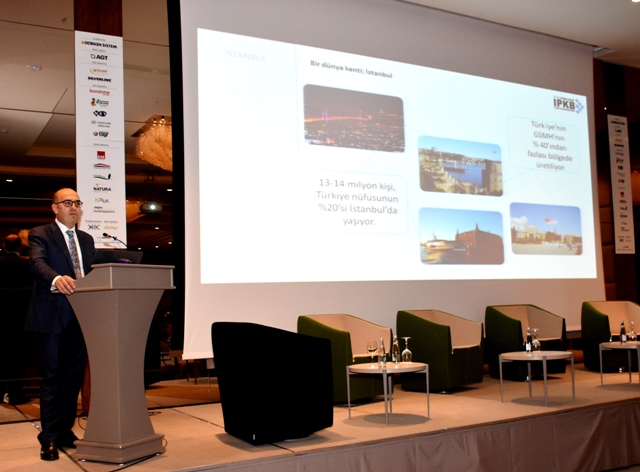Istanbul Project Coordination Unit Director Kazım Gökhan Elgin attended as a speaker to 2nd Green Buildings and Beyond Conference which brought together architecture and engineering sectors.
The 2nd Green Buildings and Beyond Conference specially organized for World Environment Week this year was held in Istanbul on Wednesday, June 8. In the conference with theme: urban transformation opportunity in green structuring, IPCU Director Kazım Gökhan Elgin briefed participants about renovation of education and hospital buildings in line with green buildings criteria under urban transformation, together with processes, principles, standards, strategies and site applications in connection with such renovations.
As a speaker, sharing the same platform with many famous names including Architect Yama Karim, president of Studio Libenskind that realized many projects in line with sustainable architecture and urban design, RIBA award winner Architect Stefan Behnish, and world famous Ecologist Gary Grant, IPCU Director Elgin referred to their activities under Istanbul Seismic Risk Mitigation and Emergency Preparedness Project (ISMEP), as well as why such a project was needed, the earthquake fact in our country, and works which had been performed under earthquake preparedness.
Clarifying how the buildings are selected, IPCU Director further stated that they provided service to nearly 12 public authorities.
Pointing out use of seismic isolators in reconstruction of 3 important hospitals of Istanbul, namely Kartal Lütfi Kırdar Training and Research Hospital, Okmeydanı Training and Research Hospital, and Göztepe Training and Research Hospital, Elgin further indicated that all materials and construction technologies used for the hospitals were in conformity with green building concept. These hospitals are the first public hospitals of Turkey to have LEED certification.
Under ISMEP Project, IPCU reconstructed and retrofitted 1064 school buildings. It ensured reconstruction and retrofitting of total 1287 public buildings including 109 health buildings of which 48 were hospitals, 54 administrative buildings, 38 dormitory buildings, and 22 social service buildings.

